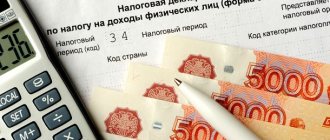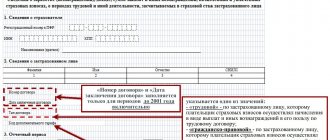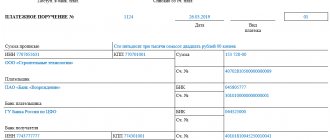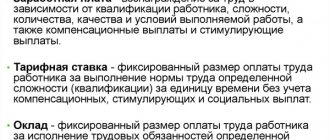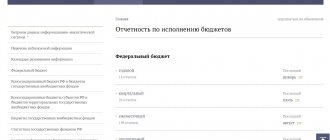Who cannot be sent on a business trip
In a normal situation, management can send employees of a business entity without asking their consent, since a business trip is the performance of their job functions.
However, there are categories of citizens for whom business travel is either generally prohibited or requires written consent from them.
There is a ban on business trips for the following citizens:
- Women with an employment contract who are expecting a child.
- Employees of the enterprise who are minors. However, for these employees, if they work at the enterprise in creative professions (actors, singers, writers, journalists) and engage in professional sports, the restriction does not apply.
- Employees working for the company under an apprenticeship contract.
Certain categories of citizens can go on business trips, but their consent to this must first be requested in writing.
These include:
- Women working under an employment contract who have young children. Employees who are the only parent of a child under three years of age are also treated as such.
- Single workers working at the enterprise whose children are under five years old.
- People working in the company who have disabled children.
- Company employees who provide medical care to their family members.
- For employees with a disability group, if the expected work trip interferes with their recovery program.
Important! HR specialists need to remember that before a business trip for these categories of workers, a request for their consent must be received during the process of registering a business trip. At the same time, obtaining their consent is not enough; the document must also contain information that they know about their right to refuse a business trip.
Many problems can arise when an internal part-time worker is expected to travel on a business trip. After all, there is no ban on sending him on a business trip. Questions arise about how time on a business trip should be reflected in his second job at the company.
The provisions of the law prohibit him from taking vacation at his own expense or paid annual leave during this period. In these cases, it is recommended to provide such an employee with additional paid leave to the annual one.
Providing business travel
Any business trip involves expenses. The employer organization is responsible for providing sufficient money. It is necessary to warn the employee about the upcoming trip in advance. Before departure, the accounting department gives the employee money in cash at the cash desk or transfers it to a card account. The advance must cover:
- fare;
- cost of housing;
- personal expenses;
- purchase of goods, materials;
- expenses for communication services;
- other expenses.
The employer's responsibility for covering travel expenses does not shift to the employee.
Lack of advance payment may be grounds for an employee to refuse to travel.
Registration of a business trip in 2020 - changes and samples, step-by-step instructions
Many companies and individual entrepreneurs, in the course of their activities, are faced with the need to send employees on trips away from their place of permanent work in order to carry out certain assignments. Such a trip is called a business trip (Article 161 of the Labor Code of the Russian Federation). At the same time, the employer is obliged to preserve for the posted worker his workplace, average earnings, and also reimburse the costs incurred by him, the list of which is established by law.
In order to correctly and reasonably account for travel expenses, the accountant must have properly executed documents confirming the fact of the business transaction.
Accounting for travel expenses can be divided into 2 main stages:
- preliminary calculation and issuance of money on account to the business traveler;
- approval of the employee’s advance report on the amounts spent.
In order to pay an advance to an employee for business trip expenses, the accountant needs to calculate it based on internal documents:
- an order or instruction from the manager to send a company employee on a business trip, which indicates the employee’s full name, duration and purpose of the trip (to perform a work assignment);
- a written decision of the manager on an employee’s trip on a business trip using official or personal transport (if accepted).
Based on what is written in these two local documents, as well as the business travel regulations developed and adopted by the company, the accountant calculates a cash advance, which includes:
- the cost of tickets for travel to and from the business trip;
- payment for hotel accommodation;
- daily allowance for each day you are on a business trip;
To find out whether to pay an employee a daily allowance for days on the road if the ticket includes meals, read the material “A business trip ticket includes meals - should an employee be paid a daily allowance for days on the road?”
- other expenses permitted by management.
Is it possible to take into account taxi expenses of a business traveler when taxing, read the article “Reflecting taxi expenses in tax accounting (nuances).”
The Federal Tax Service of the Russian Federation considers it possible to take into account in tax expenses the special clothing issued to employees sent to the Far North. Read more in the publication “Warm clothes for a northern business trip can be written off as expenses.”
The daily allowance does not depend on travel and housing costs. This separate expense item is defined as the funds needed to perform work and stay during a business trip (for food).
Daily allowances are not limited by law, and every commercial organization has the right to establish their amount by internal act. At the same time, you need to remember that there is a limit above which personal income tax must be calculated and withheld from the employee, as well as insurance premiums must be calculated. In 2019-2020, this limit is 700 rubles. per day for business trips in Russia and 2,500 rubles. - for business trips abroad.
Daily allowances are paid for all days on a business trip, including weekends and non-working holidays, as well as travel days and forced stops (clause 11 of the regulation on the specifics of sending employees on business trips, approved by Decree of the Government of the Russian Federation of October 13, 2008 No. 749). The employee does not need to report for the use of daily allowances.
Other expenses may include expenses for mobile communications, the Internet, and payment for goods and services necessary for work.
The employee receives an advance at the organization's cash desk or by non-cash transfer to a card and, before the end of 3 days after returning to his permanent place of work, reports to the accounting department for the money received.
See also: “We arrange and pay for business trips.”
A business trip abroad is processed in the same way as in Russia, only it has some features:
- Additional expenses are added for obtaining a visa, a foreign passport, consular and other fees necessary for traveling abroad (subclause 12 of Article 264 of the Tax Code).
- The daily allowance limit, exempt from personal income tax and contributions when traveling to another country, is 2,500 rubles.
- When traveling abroad, the time for calculating daily allowances is determined by travel documents, and in case of their absence, by travel documents or by supporting documents of the receiving party (clause 7 of the regulations on business trips No. 749).
- Primary documents drawn up in a foreign language must be translated into Russian (clause 9 of the Accounting Regulations, approved by order of the Ministry of Finance of the Russian Federation dated July 29, 1998 No. 34n).
If an employee purchased currency on his own, then when drawing up a report he must attach certificates of purchase. If such a certificate is not available, then the expenses will be recalculated at the rate of the Central Bank at the time of receipt of accountable money (clauses 5, 6, 7 of PBU 3/2006).
After the report is approved:
- the balance of the advance, returned in foreign currency, is credited to the cash desk with conversion into rubles at the official exchange rate on the date of receipt of money;
- overexpenditure made in foreign currency is issued to the employee in rubles, recalculated at the exchange rate on the day the advance report is approved.
For daily allowances in foreign currency, that part of them that is subject to personal income tax must be recalculated into rubles at the rate on the last day of the month in which the advance report was approved (letter of the Ministry of Finance dated November 1, 2016 No. 03-04-06/64006).
IMPORTANT! If the company’s local regulatory act specifies the amount of daily allowance in foreign currency and pays the employee in rubles, then there is no need to recalculate (letter of the Ministry of Finance dated April 22, 2016 No. 03-04-06/23252).
An approved advance report - in Form AO-1 or an independently developed form - with documents attached to it confirming expenses incurred in the interests of the company will serve as the basis for reflecting these expenses in accounting.
What should an accountant count and check?
The accountant, when checking the advance report, makes an adjustment calculation of daily allowance (if the business trip was shorter or longer than planned) on the basis of travel tickets, from which he takes the departure date and return date. The departure day is considered to be the current day if the departure time on the tickets is before 24:00 inclusive, and the next day is from 00:00.
REMINDER! If the trip was made by personal transport, then the daily allowance is calculated according to the waybill and accommodation invoices, according to which the accountant can track the date of arrival and departure to calculate the day on a business trip.
If there are no travel documents, as well as papers confirming the fact of residence at the place of business trip, the employee provides an official note about the actual length of stay on the business trip, confirmed by the record of the receiving party. The responsible person of the organization to which the employee was sent must put a mark on the date of arrival and departure (clause 7 of the Regulations on business trips dated October 13, 2008 No. 749).
If an employee has used official or personal transport and needs compensation for its use and gasoline, then he must submit a memo, a waybill that calculates the mileage traveled, and attach invoices and receipts for the purchase of fuel. The possibility of reimbursement of such expenses should be provided for in the accounting policy.
Housing rental documents confirming payment must also be checked: checks, receipts, rental agreement, receipt from the owner of the house or apartment. During the verification, the amount actually paid and confirmed is taken into account and approved.
For information about the specifics of taxation in settlements with accountable persons, including when sending employees on a business trip, read the article “Procedure for taxation of settlements with accountable persons”.
Let's consider what entries in 2019-2020 for accounting for travel expenses are provided for by the Chart of Accounts.
Dt 71 Kt 50, 51 - money was paid for travel expenses.
Dt 20, 23...44 Kt 71 - daily allowance, travel tickets (without VAT), hotel bill (without VAT);
Dt 19 Kt 71 - VAT for travel and housing is reflected;
Dt 68 Kt 19 - accepted for deduction of VAT for transport and accommodation;
Dt 20, 44, 91-2, 08, 10... Kt 71 - other expenses are taken into account;
Dt 50 Kt 71 - return to the organization’s cash desk the balance of the advance;
Dt 71 Kt 50 - compensation for overruns.
Dt 70 Kt 68 - personal income tax is withheld from daily allowances exceeding the limit.
Each business trip is not only about the trip itself, business meetings and a change of scenery, but also about the correct execution of documents. Since 2020, documents have been drawn up taking into account changes that have entered into force at the legislative level. Let's talk about them in more detail.
What it is
A business trip is an employee’s departure to another locality for the purpose of fulfilling an official assignment. The duration of the trip is always agreed upon in advance.
Sometimes it is necessary for an employee to travel to a branch or division of his own company; in this case, the registration process is identical to the standard one if the division is located in another locality or country.
The employer is obliged to cover the employee's expenses for:
- travel to and from your destination;
- accommodation;
- nutrition and other additional purposes.
It is necessary to distinguish a business trip from an official assignment. The fact is that the latter term presupposes the performance of an official task in the same locality, for example, a trip to another enterprise for the purpose of conducting negotiations or signing contracts.
A business trip is not a trip for an employee who works as a machinist, driver, courier, etc., that is, his work activity involves constant travel.
A business trip can be carried out using the employee’s personal transport if an agreement has been made between the employee and the employer. In this case, the calculation of the costs incurred is very important. We’ll tell you what the law in the Russian Federation says about this and more.
Legislation
What exactly constitutes a business trip is described in Article 166 of the Labor Code of the Russian Federation, and Article 167 describes the guarantees of enterprise employees.
So, if an employee goes on a business trip, the employer guarantees him:
- reimbursement of expenses incurred;
- maintaining a job;
- no changes in the amount of average earnings.
In addition to expenses for travel, accommodation, and finding a place to live (which may also require investments), the employer pays his employee a daily allowance. This concept means spending on food and travel in the city where he was sent.
List of required documents
Naturally, there are certain rules for recording travel expenses in the balance sheet, so all amounts spent on travel. They must be documented, because it is on the basis of such documents that their compensation will be made. Naturally, it will be difficult to provide all the receipts, but the main documents for receiving travel payments include:
- transport tickets, where the date of arrival and departure from the place of work is clearly visible, and their price is indicated;
- checks affecting daily housing expenses.
Any additional expenses not provided for by the company management are paid by the employee of the organization independently.
It is worth saying that just a year ago the country’s authorities seriously thought about canceling daily payments, and they cited the economic crisis as the reason for this, which greatly hampered the work of many organizations. However, these plans remained at the level of talk, so it is worth assuming that no one is going to cancel the daily allowance in 2020 either.
Duration of business trips
The duration of the upcoming business trip is set by the manager, who fixes this period at his disposal. The decision about what period an employee needs on a business trip is determined by him according to the production goals that are set for the employee and the time allotted for their implementation.
If the company's regulations require the issuance of a job assignment, then the duration of the business trip should also be included in this document.
Since sometimes it is impossible to accurately take into account all factors, the duration of a business trip can be extended or shortened. This situation is formalized by issuing a separate order from the company’s management.
Previous acts of law, which have now lost their force, stipulated that a business trip was considered a trip of more than one day and it could not be more than forty days. And if the period went beyond these established frameworks, then the personnel service had to formalize the transfer of the employee.
Currently, the Government Resolutions that have entered into force do not establish either a minimum or maximum period.
The question often arises when determining a business trip for employees whose work requires constant travel to perform their job functions.
Attention! In this case, one should proceed from the concept of the business trip itself, and not confuse it with work, which, in accordance with the executed employment contract, is of a traveling nature. You should also distinguish between a business trip and a transfer to work in another area.
The laws do not contain a prohibition on extending the period of an existing business trip, or postponing a future one, but for which all the necessary documents have already been drawn up. However, at the same time, not a single regulatory act contains instructions on how exactly this can be done correctly.
If you need to extend an existing business trip, then it is best to issue an order for this. It is drawn up in any form, but in addition to the mandatory details, it must indicate the reason why the trip is being extended, as well as the new end date.
After this, corrections are made to all business trip documents - the old date is crossed out with one line so that it can be easily read, and the new date is indicated on top.
Then the employer must calculate the daily allowance and funds to pay for housing for the new term, and transfer this amount to the employee on the card, by postal order or in another way. It is prohibited to force an employee to use personal funds for these purposes, even if they are subsequently reimbursed.
Attention! Postponement of the date of an issued business trip is also issued by a separate order. It states the reason for the postponement and the new start and end dates.
You also need to make corrections in all completed documents, crossing out old dates and entering new ones. There is no need to recalculate payments - after all, only the dates of the trip change, and not its duration.
Daily allowance for business trips in Russia
The New Year did not bring the abolition of daily allowance expected by many employers. Currently, employee travel must be accompanied by payment. In addition, these amounts must be paid for one-day trips, as well as when the employee performs labor functions, if his employment contract specifies the traveling nature of the work.
Amount of daily allowance – norms for Russia
The company administration, as before, determines the amount of daily allowance independently, fixing it in the Collective Agreement, Regulations on Business Travel or other local regulations of the company. There are no upper limits limiting these sizes.
Attention! When assessing personal income tax and calculating insurance premiums, a standard of 700 rubles applies. Above this amount, daily allowances are subject to income tax.
One day business trip
Since the previously effective Resolution was canceled, and the new norms do not establish a minimum duration of a business trip, a one-day trip is also recognized as such. The Labor Code of the Russian Federation establishes that registration of a business trip must be accompanied by the payment of daily allowances.
How to arrange a business trip in 2019: instructions with sample documents - Buhproffi
Mandatory
With the introduction of changes in the registration of business trips, currently only two documents have the status of mandatory use:
- An employer's order or instruction is the main form that determines the direction, duration of a business trip, etc. Typically, a business trip order is issued on form T-9 or on company letterhead. organizations.
- An advance report is a document with which an employee confirms expenses incurred during a trip with supporting documents attached. Compiled according to the AO-1 form.
To prepare these documents, it is necessary to mention in the company’s local acts:
- Travel certificate - contains stamps from the receiving companies. You can use a single form, which will include a certificate, a job assignment, and an advance report.
- Job Assignment—Contains information about the work that needs to be done while traveling. Can be issued in form T-10a.
- A task completion report is a document that is drawn up by an employee upon returning from a trip. Includes an explanation of the work done during the trip.
- Journal of employees going on a business trip - serves to record employees who are going on trips;
- Service note - necessary to pay expenses if the employee uses personal transport.
The work of an economic entity cannot be limited to any territorial boundaries. From time to time, on instructions from management, company employees go on business trips on official assignments. Since such a trip is associated with the implementation of assigned tasks, and also requires certain financing, you need to know how to properly register a business trip.
How to report a trip
Since 2020, the law has allowed not to formalize an official assignment. In this case, to confirm the total duration of the trip, you need to use travel tickets, boarding passes, hotel bills and other documents.
If the employee was unable to provide them, then you can request from the receiving company an official document confirming the work of the business traveler, with a seal and signatures.
Since 2020, it is allowed to use personal vehicles when traveling to and from a business trip. In this case, fuel receipts and a memo addressed to the manager are used as confirmation of the travel period.
Thus, the period of days for which daily allowance is paid on a business trip is documented by forms provided by the employee.
But the employee is not obliged to provide documents that would confirm the expenditure of daily allowances, and in general the very fact that they were used. By law, the employer must make this payment, but what the employee spends it on is his own business.
Travel expenses under the simplified tax system “income minus expenses”
When sending an employee on a business trip, the organization uses the simplified tax system to calculate travel expenses in the same way as under the OSNO. Having reimbursed the employee for all travel expenses stipulated by law, the enterprise has the right to reduce its income by them for tax purposes, subject to documentary confirmation and economic justification of the expenses incurred (subclause 13, clause 1, article 346.16 of the Tax Code of the Russian Federation).
A distinctive feature is the date on which travel expenses are included in expenses. Since accounting for expenses on the simplified tax system is carried out on a cash basis, the date of recognition of expenses is considered to be the date of approval of the advance report. However, if the employee has spent his own funds and the company reimburses him for them, the reimbursed payments should be included in the book of income and expenses at the time of issuing money from the cash register (Clause 2 of Article 346.17 of the Tax Code of the Russian Federation).
One more nuance. According to the Ministry of Finance, an individual entrepreneur without employees on a simplified basis cannot take into account the costs of his own trips. The department justifies this position as follows: a business trip is a trip by an employee at the direction of the employer. But an individual entrepreneur does not have an employer, just as he himself cannot be his own employee (letters from the Ministry of Finance dated February 26.
For more information about the recognition of expenses under the simplified tax system, read the material “List of expenses under the simplified tax system “income minus expenses””.
Payment procedure
At each enterprise, daily payment standards are set individually. Management, based on current legislation, can change the amount of payments every year depending on the financial condition of the company.
These amounts must be specified in the order or memo of the enterprise. Depending on the status of the employee and the region of travel, a differentiated approach may be applied when calculating payments.
Daily allowances in 2020, as in previous periods, are taken into account in the expenses of the institution. If there is a noticeable increase in such payments, then management may become interested in this fact, so there should always be arguments at hand confirming all expenses incurred. Although documentary evidence of the money spent is not provided for in the current legislation.
How to arrange a business trip for an employee in 2019: instructions for an accountant
In order to make a business trip order, you can use standard forms T-9, T-9a, or do it on company letterhead in a free style.
Previously, an official assignment was used to draw up an order, which was indicated as the basis. Now, in that column, data about the manager’s order, memo is recorded, or this field remains empty.
Sometimes a trip means that an employee must begin performing duties in a new place on Monday. To do this, he needs to go on a business trip on his day off.
This point must be agreed upon with the employee himself - in order to complete a business trip on a day off, it will be necessary to issue an order that the business trip will begin on a day off, and the employee must give written consent to this. In such an order, it is necessary to indicate the working hours for a given day - this step is necessary in order to eliminate disputes about payment for such days.
For example, if the train leaves several hours before midnight, then the order must indicate that only these hours are subject to payment. Otherwise, the employer will need to compensate the entire day. And this will have to be done either double or single, but with an additional day for rest.
Legislation
The days of departure and return of the employee are necessarily included in this period. Example: if the train departs on June 2 at 23:58, then this date (June 2) is considered the day the business trip begins. The maximum duration is not specified by law.
If the deadline changes for valid reasons, then it is legally permitted to adjust and shift the dates. Below we will tell you how to arrange a business trip in 2020, taking into account ordinary and special circumstances.
Article 168.1 of the Labor Law also stipulates reimbursement of expenses for those employees whose work in the organization involves field conditions or travel.
They are required to be reimbursed:
- living expenses;
- travel and transportation costs;
- food costs and so on.
This often includes the purchase of special shoes and uniforms, if necessary during the work process.
Refusal of a business trip is a topic specified in the Labor Code of the Russian Federation. However, not all categories of workers have the right to refuse.
The employer's responsibilities include obtaining written consent for such a trip from:
- women with children whose age does not exceed 3 years;
- all employees who have a disabled person in the family who requires care;
- citizens who have formalized guardianship of minors;
- single mothers or fathers whose children are under 5 years old.
Important! Employees should be aware that sending these categories of people on a trip without written consent is a direct violation of the law, which can result in serious penalties.
The law strictly prohibits (the articles of the Labor Code indicate) sending the following persons on trips:
- minors (Article 268);
- pregnant women (Article 259).
The law establishes several types of business trips:
- foreign;
- inside the country.
Traveling outside the country requires a more careful approach. The calculation of daily allowance is influenced by additional factors, for example, differences in exchange rates.
There are also several types of trips:
- single or group;
- planned or unscheduled;
- short-term or long-term.
The type of business trip may affect the amount of expenses and timing, but does not affect the registration procedure, which will be discussed below.
The law establishes a clear procedure for processing documents for sending a citizen on a business trip. We will discuss the changes that have recently come into force and examples of basic documentation.
If a business trip is planned, it is arranged according to the approved schedule. Otherwise, you can get by with an order.
The procedure for sending an employee looks step by step as follows:
- Drawing up an order.
- Preparations are made for the trip, including the employee receiving an advance to pay expenses.
- On the appointed day, the employee leaves the workplace and goes on a trip.
- The corresponding mark is placed on the accounting sheet.
- As soon as the work ends, the employee returns to the organization.
- He provides a report on the work done and payment documents proving the intended use of the funds provided.
If the advance payment does not cover all expenses, the employer is obliged to reimburse the employee for the funds spent.
The main document here is the travel order. It is compiled using standardized forms T-9 (for a single trip) and T-9a (for a group trip).
Let's figure out how the documents are filled out. Outwardly they are similar. The name of the organization is indicated at the top line of the document. The document number is indicated serially. It is dated on the day of registration and must be endorsed by the manager.
The order must indicate the following information:
- last name, first name and patronymic of the assigned employee;
- place and time of business trip;
- its purpose;
- source of funding (indicate the name of your own organization or something else).
Since the order does not describe expenses, it should be sent to the accounting department for prompt calculations and provision of an advance payment.
A separate topic is a business trip that falls on a weekend or during a vacation. Regarding the first point, the employee has the right to receive compensation in the form of wages or additional time off upon return.
An employee can also be called to go on a business trip if he has already been granted leave, but only with his consent. In this case, an order for recall from vacation is initially issued.
For each day on a business trip, the employee is paid daily allowance, including weekends and holidays. He does not have to account for these funds in the final report. The amount of daily allowance is set by the organization itself, which is specified in the collective agreement.
The following daily allowances are not subject to personal income tax:
- 700 rubles per day if the business trip is within Russia;
- 2500 rubles for trips abroad.
If a business trip falls on a weekend, payment for these days is calculated as follows:
- if the employee spends this day at his own discretion, without being involved in work, then he should not be paid;
- if he spent a day off on the road or at work, then each such day is paid at least twice the amount or in the amount of average earnings, but with the opportunity to take time off.
While on a business trip, the employee retains his average salary. To make the calculation, you must first determine the number of days actually worked (only working days are taken into account).
It will be convenient for the accountant to use the Regulations from Government Decree No. 922 of 2007 (clause 5).
The following days are not included in the calculation:
- business trips;
- sick leave;
- just me;
- vacation.
The billing period is one year. If the employee has not worked for 12 months, only the period worked is taken into account.
Now the average daily earnings are calculated, which includes all wage payments: this amount is divided by the number of days worked. The resulting number should be multiplied by the number of business trip days.
Calculating travel allowances is not complicated, but it will require the accountant to be attentive and knowledgeable about laws and changes in them.
Despite the official cancellation of the travel permit, it is still better to draw up such a document to confirm expenses. In a letter from the Ministry of Finance of Russia dated April 1, 2010.
No. 03 - 03 - 06/1/206 it is explained that in order to confirm the expenses for daily allowances, an organization only needs to develop and approve a local regulatory act that fixes their amount, an order to send an employee on a business trip, a job assignment, a business trip report and the most important thing is a travel certificate. It is not necessary to submit checks, receipts, invoices confirming the expenditure of daily allowance.
For foreign business trips, the rate of daily travel expenses in 2020 cannot exceed 2.5 thousand rubles per day. For trips within Russia - 700 rubles. This norm applies to employees of state enterprises.
Private organizations have the opportunity to independently set the amount of daily travel expenses. The amount of daily travel expenses must be reflected in collective agreements and local acts on labor law.
For example, if a business trip begins on Monday, but the employee had to leave for the airport at 11 pm in order to catch a plane to his destination, then as a result this day cannot be considered as completely free.
It is considered the day of departure on a business trip, despite the fact that such departure occurred only in its last hour. Cases where an employee’s return from a business trip occurs at night or early on Saturday morning are considered in a similar manner.
If his arrival falls on a given day off, it is also considered to be related to a business trip. This also applies to the situation when he arrived home at 1 am on Saturday.
By default, the first option is implemented with double payment for a day off during a business trip, since it is indicated that an additional day off for each such day with payment for all such days at a single rate is provided to the employee only at his request.
A travel certificate is a document issued by an organization to an employee for the duration of his stay on a business trip. Thanks to this document, it is possible to justify the place (time) of an employee’s presence in the event of his absence from his immediate workplace.
Policy
Due to a failure, the Venezuelan Maiquetia International Airport was left without power.
Show Business
Later, in an interview with the “Exclusive” program, Sobchak confirmed that a difficult period had come in her family life, but noted that Vitorgan would remain close to her and the father of their son.
Incidents
In the city of Pervouralsk, Sverdlovsk region, a one-story store covering an area of 2 thousand square meters is on fire.
Business trip and workplace
An employee on a business trip retains his workplace. Business trip days are paid according to the average (Article 167 of the Labor Code). The algorithm for calculating average earnings is given in Regulation No. 213 and Article 139 of the Labor Code of the Russian Federation.
- Determine the day when the employee goes on a business trip and the day he returns.
- Calculate how many working days are required for a business trip.
- Take into account 12 months before the business trip. Calculate days worked and accrued wages. Do not include in average earnings days and amounts of wages calculated according to the average.
- Calculate average earnings per day.
- Calculate the average earnings for business trip days.
On practice:
- The employee was on a business trip from March 20 to March 29, 2017.
- The duration of the business trip is 8 working days according to the employee’s work schedule.
- The calculation period taken into account is 12 calendar months until March 2020. From March 1, 2020 until February 28, 2020, the employee worked 200 days. 400,000 rubles accrued.
- Average earnings per day is 2000 rubles. 400,000 rub. / 200 days = 2000 rub. in a day.
- Average earnings for 8 days of a business trip: 2000 rubles. per day X 8 days = 16,000 rub.
When calculating travel allowances, the employee will be accrued daily allowances for 10 days. Per diem is paid for weekends and/or holidays during a business trip.
Step 4: Reimbursement
Within three days after returning, the employee submits an advance travel report. This document can be prepared in free form or use the unified form No. OA-1. It should be accompanied by all documents confirming expenses - checks, payment receipts, tickets.
Since the employer compensates for travel to the place of business trip, payment for housing and accommodation, documents confirming payment for these services must be attached to the report.
It is possible that the company also accepts compensation for additional expenses - for purchasing travel documents, obtaining a foreign passport, obtaining a visa, paying for communication services. It is useful to inquire about the possibility of compensation for these expenses before the trip, and if this is permissible, obtain permission from your superiors.
If, according to supporting documents, it turns out that an amount greater than the advance payment was spent, the company will issue the unpaid money. If, on the contrary, more was given in advance than was spent, then the employee must hand over the unused funds to the cashier.
The employee reports on the results of the business trip in free form
How long to keep a business trip order
Travel documents are stored for 75 years. There is a relaxation for short-term trips; the order for them must be kept for 2 years. However, the law does not clearly indicate what kind of business trip can be considered short-term, so it makes sense to keep orders for all business trips longer than one day for 75 years.
Registration of documents for a traveling specialist is carried out in five steps. First, they determine which documents should be prepared (whether a travel certificate or a work assignment is needed). Then an order is issued. Then they issue an advance, after which they record the employee’s dispatch in the journal and note the travel days on the timesheet. After returning, the advance report is approved and travel allowances are recalculated. Documents can be drawn up in any form, including according to internal company standards, since from January 1, 2013, forms of primary documents for business trips are not required to be used.
Per diem abroad 2020: calculation nuances
When paying daily allowance to a posted worker, the following nuances must be taken into account:
- the date of crossing the border when traveling to your destination is counted as a business trip abroad.
- The date of crossing the border upon return is taken into account as a regular business trip.
- Daily allowances abroad in 2020 are tax-free only if they do not exceed 2,500 rubles. If their size is larger, then everything above the specified amount is subject to taxation.
- despite the fact that the amounts are indicated in dollars, they can also be paid to the employee in ruble equivalent.
- The exchange rate is taken in the amount established on the last day of the month in which the employee submitted the advance report.
These nuances are important to consider for the correct taxation procedure for an organization and a business traveler.
For example, a business traveler travels by train from Moscow to Helsinki. Departure at 19.15 on October 10 from Moscow and arrival in Helsinki on October 11 at 15.30. Crossing the border at 03.15. Payment will be made for October 10 - 700 rubles, for October 11 - 2500 rubles.



